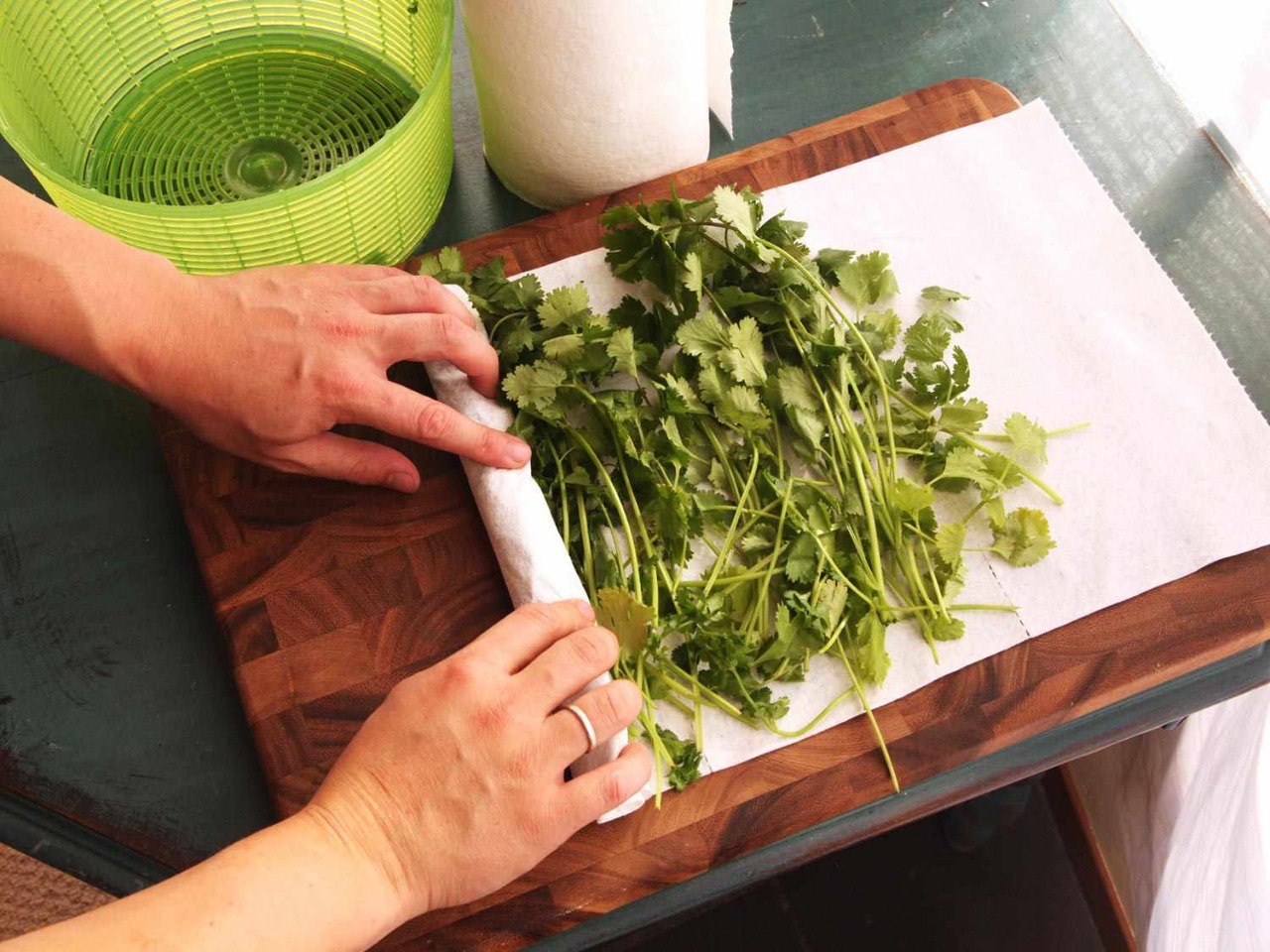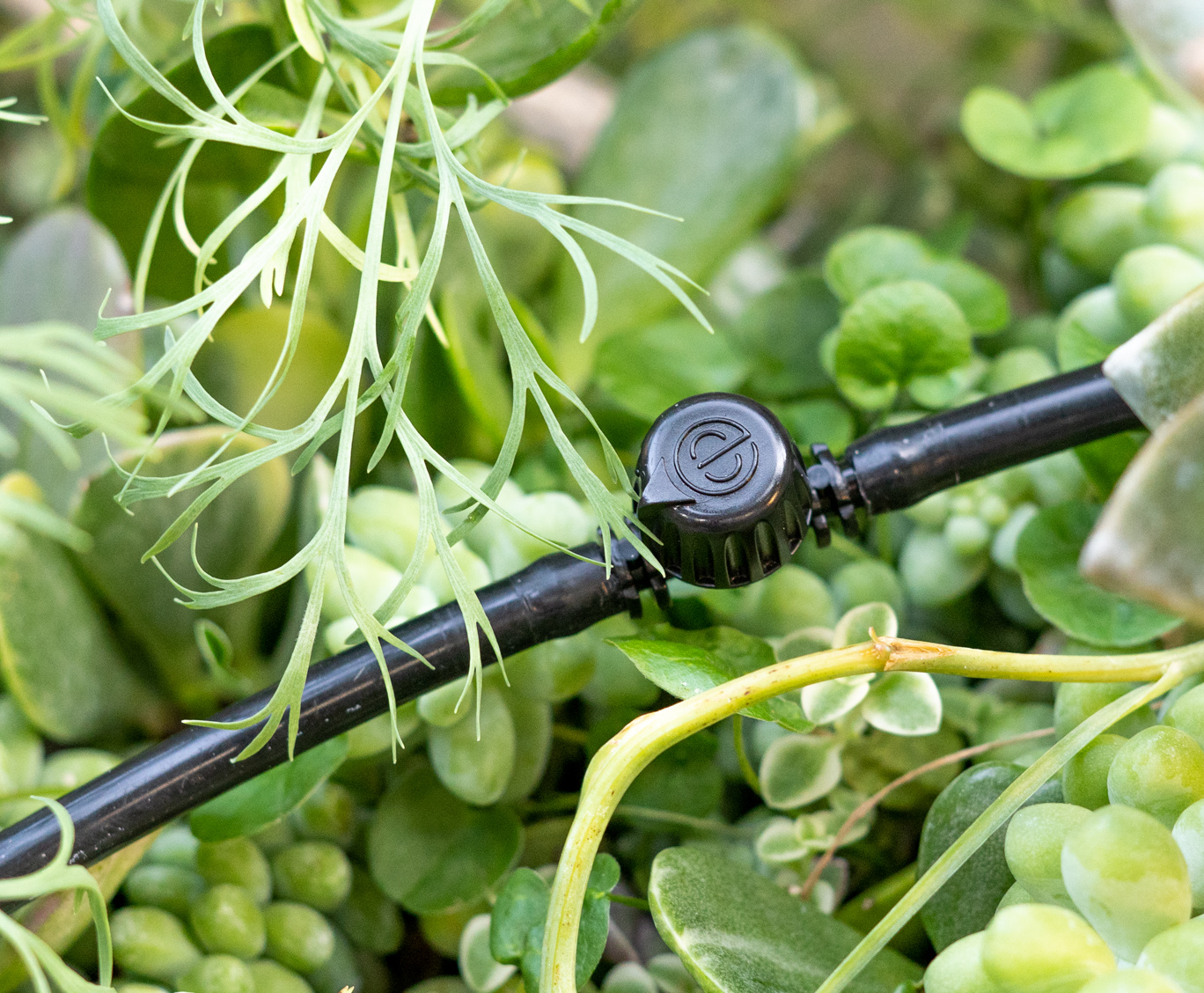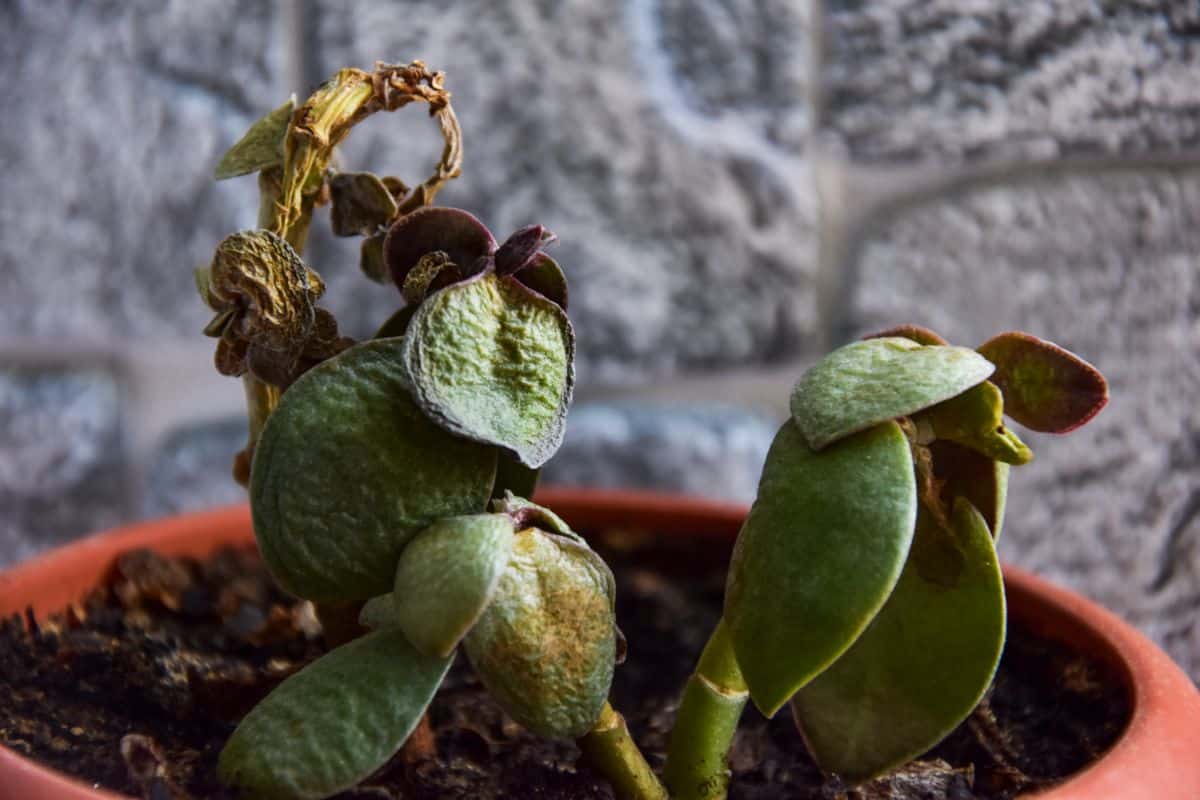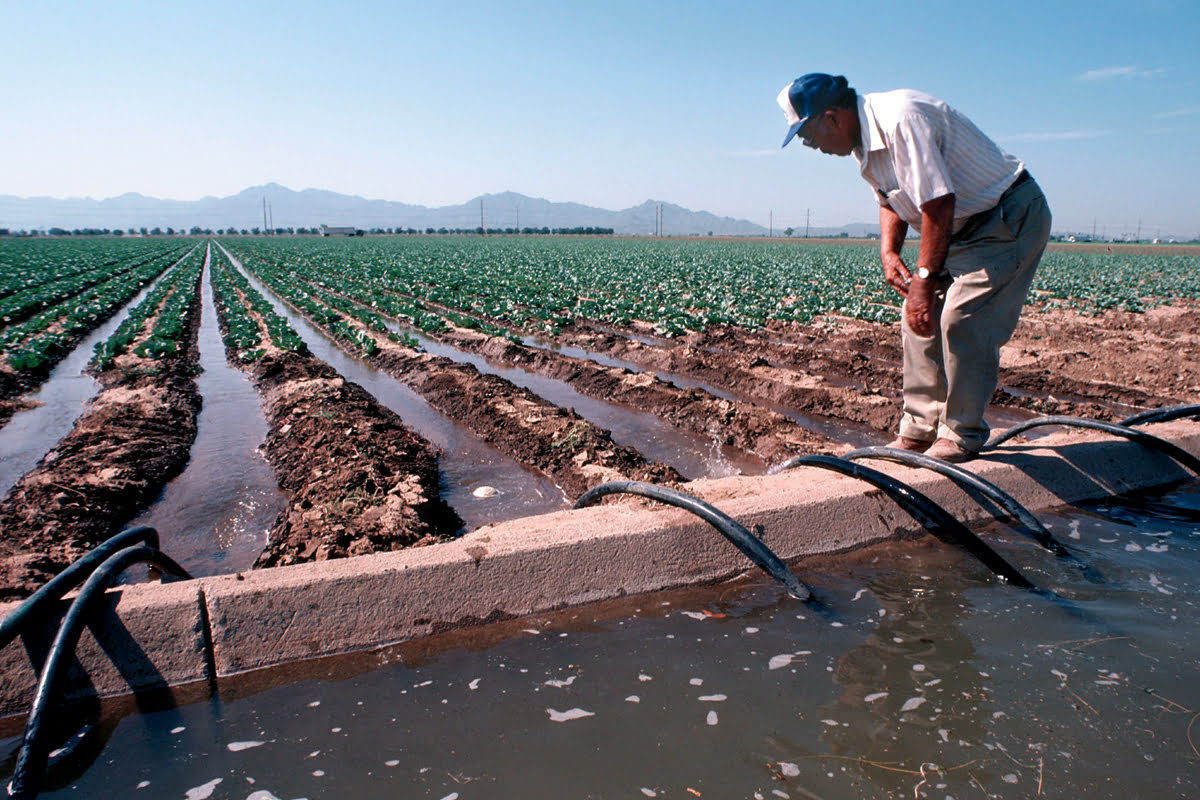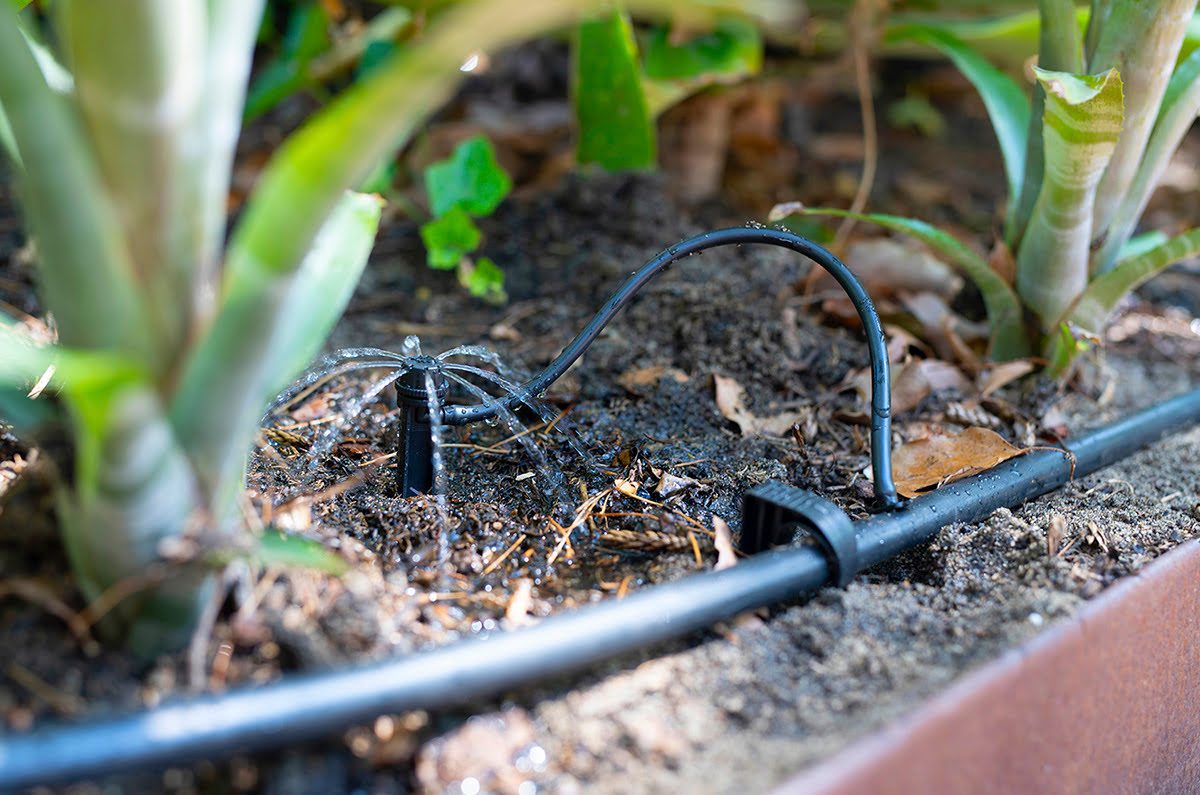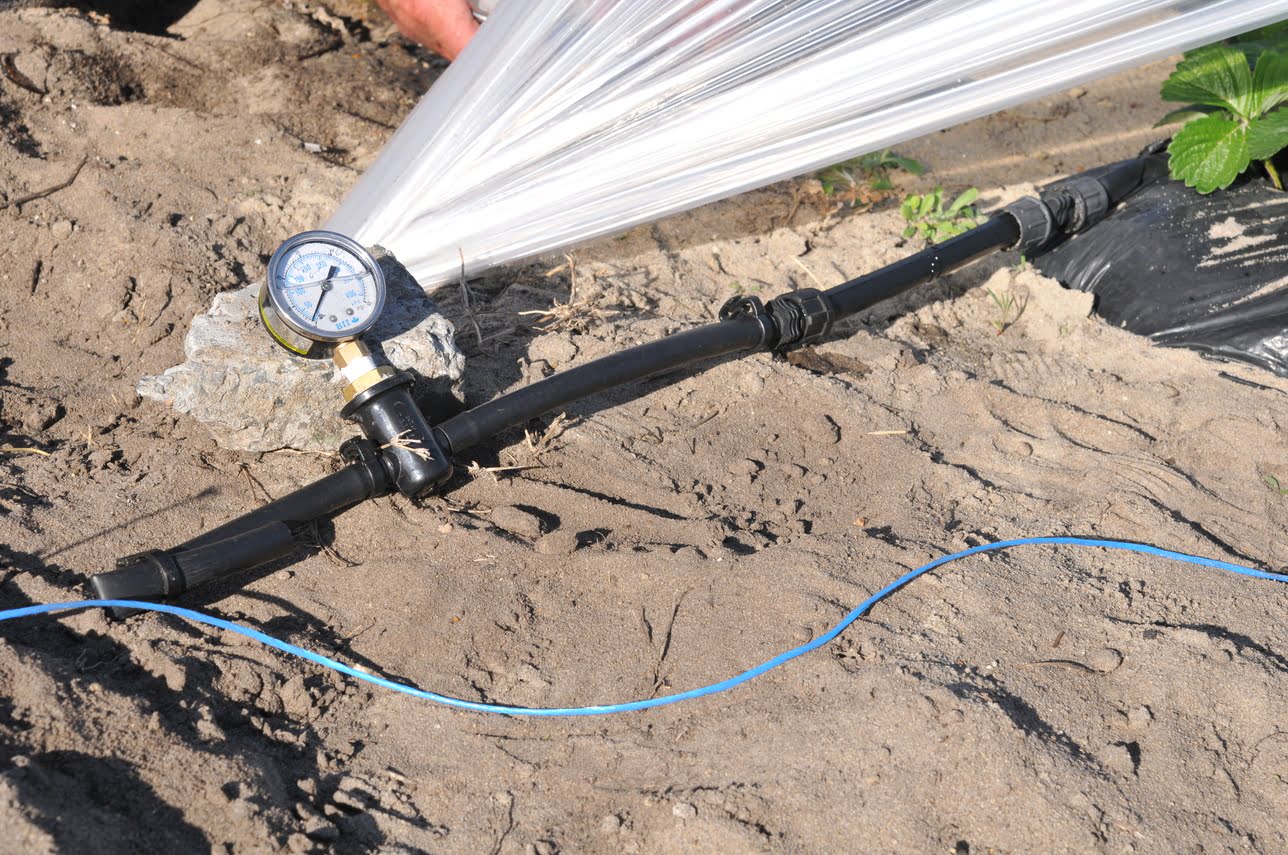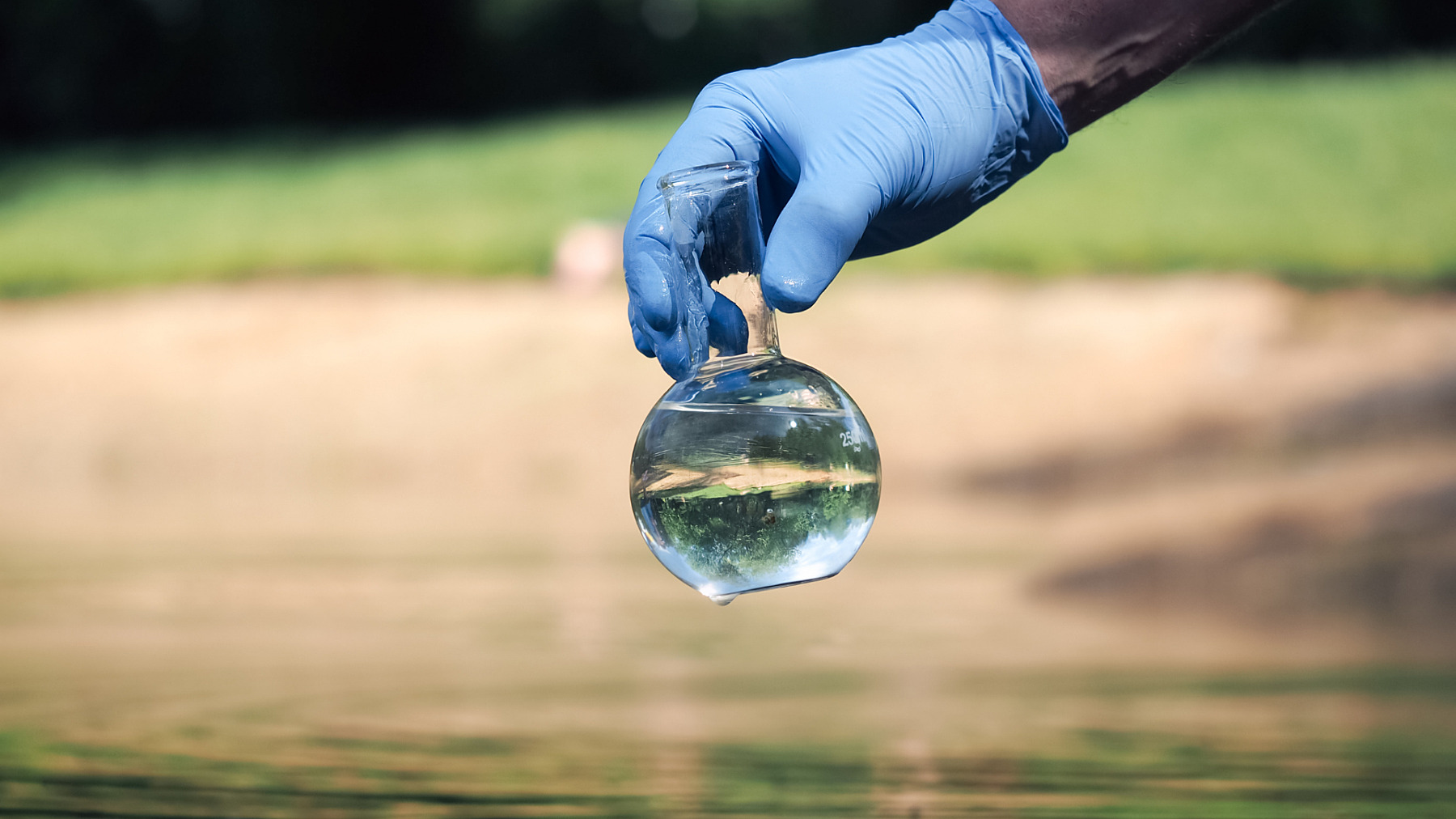Home>Gardening News and Trends>Latest News>How Does Drip Irrigation Save Water
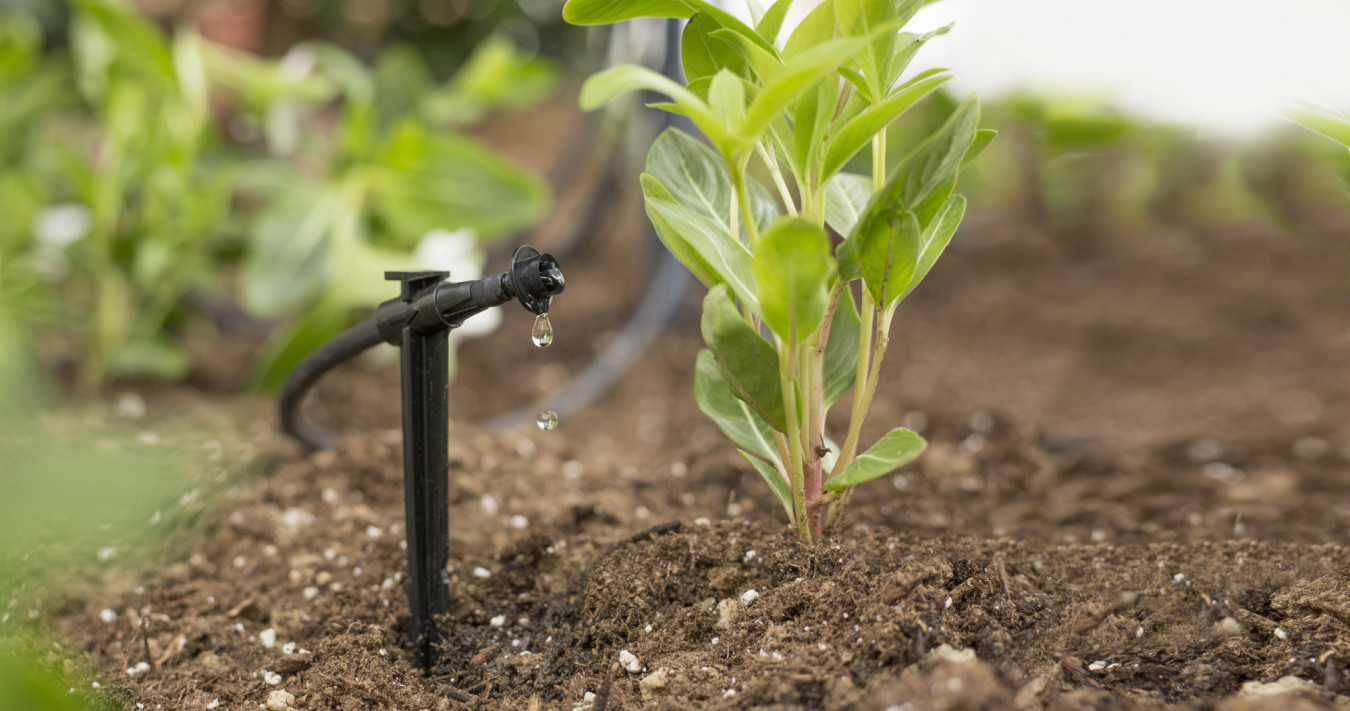

Latest News
How Does Drip Irrigation Save Water
Modified: January 22, 2024
Discover the latest news on how drip irrigation can save water and boost efficiency in agriculture. Learn about the benefits and implementation of this sustainable irrigation technique.
(Many of the links in this article redirect to a specific reviewed product. Your purchase of these products through affiliate links helps to generate commission for Chicagolandgardening.com, at no extra cost. Learn more)
Table of Contents
Introduction
Drip irrigation is a technique that has revolutionized the way water is used in agriculture and gardening. It is a method of providing water directly to the roots of plants, minimizing evaporation and maximizing water efficiency. This system delivers water slowly and consistently through a network of tubes and emitters, ensuring that plants receive the precise amount of water they need.
Water scarcity is a global issue, and conserving water has become a top priority. With traditional irrigation systems, a significant amount of water is wasted due to evaporation, runoff, and inefficient distribution. Drip irrigation offers an effective solution to this problem by targeting the root zone of plants, reducing water waste and ensuring the proper hydration of crops.
This article will explore the benefits and effectiveness of drip irrigation in saving water. We will examine various factors that contribute to water savings and provide case studies to demonstrate the significant impact of this technique. By highlighting the advantages of drip irrigation, we hope to inspire a wider adoption of this water-saving method.
What is Drip Irrigation?
Drip irrigation is a method of irrigation that delivers water directly to the roots of plants, drop by drop, through a network of tubes and emitters. Unlike traditional irrigation systems that distribute water across the entire surface area, drip irrigation targets the root zone, minimizing wastage and maximizing efficiency.
This technique involves placing drip emitters or micro-sprinklers at the base of each plant or along the rows of crops. These emitters release water slowly and evenly, ensuring that plants receive a consistent supply of moisture. The amount of water delivered can be precisely controlled, allowing for optimal hydration tailored to the specific needs of each plant.
Drip irrigation systems can be designed for various scales, from small home gardens to large-scale agricultural operations. The main components of a drip irrigation system include the water source, a filtration system to remove impurities, pressure regulators to maintain steady flow, tubing or pipes to transport the water, and emitters to release the water at the desired rate.
One of the key advantages of drip irrigation is its high efficiency in water distribution. Traditional irrigation methods, such as sprinklers or flood irrigation, often result in water loss due to evaporation or runoff. In contrast, drip irrigation delivers water directly to the root zone, reducing evaporation and ensuring that water is utilized efficiently.
Furthermore, drip irrigation systems can be combined with smart technologies, such as moisture sensors or timers, to further optimize water usage. These sensors can detect the moisture level in the soil and trigger the irrigation system only when necessary, preventing overwatering and minimizing water waste.
In addition to water conservation, drip irrigation offers several other benefits. It can help prevent weed growth by directing water only to the plants, reducing competition for resources. The consistent moisture level provided by drip irrigation also promotes healthier root development and minimizes the risk of fungal diseases.
Overall, drip irrigation provides an innovative and effective way to use water efficiently in agriculture and gardening. By delivering water directly to the roots of plants, it minimizes wastage and maximizes the benefits of irrigation, making it a sustainable option for water-conscious individuals and industries.
Benefits of Drip Irrigation
Drip irrigation offers a plethora of benefits that make it a preferred choice for farmers, gardeners, and landscapers. Let’s explore some of the key advantages of using drip irrigation:
- Water Efficiency: Drip irrigation is a highly efficient method of watering plants. It delivers water directly to the root zone, reducing evaporation and minimizing water loss. Compared to traditional irrigation systems, drip irrigation can save up to 50% or more water, making it an excellent choice for regions facing water scarcity.
- Reduced Weed Growth: With drip irrigation, water is targeted only at the plants’ root zone, depriving weeds of the moisture they need to grow. By minimizing weed growth, farmers and gardeners can save valuable time and effort spent on manual weeding or the use of herbicides.
- Prevents Soil Erosion: Traditional irrigation methods, such as sprinklers, can cause soil erosion due to the forceful impact of water on the ground. Drip irrigation delivers water in a gentle manner, minimizing soil erosion and preserving the quality of the soil.
- Prevents Disease Spread: When water comes in contact with the foliage of plants, it can create a breeding ground for diseases. Drip irrigation targets the roots, minimizing the contact between water and foliage, thus reducing the risk of diseases spreading among plants.
- Customizable and Flexible: Drip irrigation systems can be easily customized to suit the specific needs of different plants. The flow rate and duration of watering can be adjusted based on the plant type, growth stage, and soil conditions. This flexibility allows for optimal watering and healthier plant growth.
- Energy Efficiency: Compared to sprinkler systems, drip irrigation requires lower water pressure, resulting in reduced energy consumption. This makes it a more environmentally friendly option and helps to lower overall irrigation costs.
- Improved Crop Yield and Quality: By providing water directly to the roots, drip irrigation ensures that plants receive a consistent and adequate supply of moisture. This promotes healthy root development, better nutrient uptake, and improved plant growth, leading to higher crop yields and better-quality produce.
- Reduced Fertilizer Leaching: Drip irrigation allows for precise control over the delivery of water, preventing excessive water runoff and leaching of fertilizers. This ensures that nutrients applied to the plants’ root zone are effectively absorbed, reducing fertilizer wastage and environmental pollution.
These are just a few of the many benefits of using drip irrigation in agriculture, gardening, and landscaping. As water scarcity becomes a growing concern, adopting water-efficient practices like drip irrigation is crucial for sustainable water management.
Water Conservation with Drip Irrigation Techniques
Drip irrigation techniques play a vital role in water conservation efforts, enabling efficient water usage and minimizing waste. Let’s delve into some key ways in which drip irrigation contributes to water conservation:
- Precise Water Delivery: Drip irrigation delivers water directly to the root zone of plants, ensuring that water is applied right where it is needed. This targeted approach minimizes water loss through evaporation and avoids watering areas where plants do not require moisture. As a result, water is conserved and used more efficiently.
- Reduced Runoff: Unlike traditional irrigation methods that often result in excessive runoff, drip irrigation provides a slow and steady supply of water. By releasing water drop by drop, drip irrigation allows the soil to absorb moisture gradually, minimizing runoff and preventing water wastage.
- Minimized Evaporation: Drip irrigation significantly reduces water loss through evaporation. Traditional irrigation methods, such as sprinklers, spray water into the air, allowing a substantial amount to evaporate before reaching the plants. In contrast, drip irrigation systems deliver water directly to the roots, minimizing exposure to the air and reducing evaporation.
- Prevention of Overwatering: Drip irrigation systems can be designed with precision to deliver the exact amount of water that each plant requires. This prevents overwatering, a common issue with traditional irrigation methods, which can lead to water wastage and leaching of nutrients. With drip irrigation, water is distributed in a controlled manner, ensuring that plants receive just the right amount of moisture.
- Conservation in Sloped or Uneven Terrain: Drip irrigation is particularly advantageous in sloped or uneven terrains where traditional irrigation methods may lead to uneven water distribution and wastage. Drip emitters placed strategically along the slope deliver water uniformly, preventing runoff and ensuring that every plant receives the necessary hydration.
- Optimal Timing: Drip irrigation systems can be automated and scheduled to water plants at specific times of the day or during periods of low evaporation, such as early morning or late evening. This ensures efficient water usage and helps to conserve water by avoiding midday evaporation, when water is often lost due to higher temperatures and wind.
- Reuse of Water: Drip irrigation systems can also be integrated with water recycling or rainwater harvesting systems, making use of collected water for irrigation purposes. This practice not only conserves water but also reduces reliance on freshwater sources, making drip irrigation a sustainable option for water conservation.
By implementing these drip irrigation techniques, significant water savings can be achieved, contributing to a more sustainable and responsible approach to water management in agriculture, gardening, and landscaping.
Factors that Contribute to Water Savings
Several factors work together to contribute to water savings when using drip irrigation. Understanding these factors can help maximize the efficiency of water usage. Let’s explore some key elements that play a role in water conservation with drip irrigation:
- Proper System Design: The design of a drip irrigation system is crucial for water savings. Factors such as the layout of the tubing, spacing of emitters, and proper placement of drip lines can ensure uniform water distribution and prevent water wastage. A well-designed system optimizes water usage and reduces the likelihood of overwatering or underwatering.
- Use of Pressure Regulators: Pressure regulators are essential components of a drip irrigation system. They maintain a consistent and controlled pressure, preventing excessive water flow that can lead to emitter clogging or inefficient water distribution. By regulating the pressure, water is delivered precisely to the plants’ root zones, reducing water waste.
- Appropriate Emitter Selection: Different types of emitters, such as drip emitters, micro-sprinklers, or micro-jets, can be used in drip irrigation systems. The selection of the appropriate emitter depends on various factors, including the type of plants, soil conditions, and water requirements. Choosing the right emitter ensures that water is delivered accurately and efficiently, minimizing water loss.
- Scheduling and Timing: Proper scheduling and timing of irrigation cycles are crucial for water savings. Watering during early morning or late evening helps minimize evaporation, as cooler temperatures and reduced wind speed contribute to better water absorption. Additionally, using timers or moisture sensors to automatically control the irrigation schedule based on plant needs can prevent overwatering and optimize water usage.
- Frequent Maintenance: Regular inspection and maintenance of the drip irrigation system are essential to ensure optimal water savings. This includes checking for leaks, clogs, or damaged components that can lead to water wastage. Regular maintenance helps detect and address any issues promptly, ensuring that the system operates at its maximum efficiency.
- Proper Soil Management: The condition of the soil plays a significant role in water savings with drip irrigation. Proper soil management practices, such as adding organic matter, mulching, or using soil moisture sensors, help retain moisture and minimize water loss through evaporation. Well-maintained soil optimizes water absorption and utilization by the plants, reducing the need for excessive irrigation.
- Plant Selection and Grouping: Choosing the right plants and grouping them based on their water needs can contribute to significant water savings. By selecting drought-tolerant plant species or grouping plants with similar water requirements, water can be efficiently distributed to meet the needs of multiple plants at once, reducing overall water consumption.
By considering these factors and implementing best practices in drip irrigation, farmers, gardeners, and landscapers can maximize water efficiency and contribute to water conservation efforts.
Effectiveness of Drip Irrigation Techniques
Drip irrigation techniques have proven to be highly effective in various applications, ranging from small-scale gardens to large agricultural fields. The effectiveness of drip irrigation can be attributed to several key factors:
- Water Efficiency: Drip irrigation is known for its exceptional water efficiency. By delivering water directly to the root zone, this technique minimizes water loss due to evaporation and runoff, ensuring that plants receive the precise amount of water they need. Compared to traditional irrigation methods, drip irrigation can result in significant water savings, making it a highly effective water conservation tool.
- Customization and Precision: Drip irrigation allows for precise control over water distribution, making it highly effective in meeting the specific needs of different plants. The flow rate, duration, and frequency of watering can be adjusted based on factors such as plant type, growth stage, and soil conditions. This customization ensures that each plant receives the optimal amount of water, leading to improved growth, crop yield, and overall plant health.
- Reduced Labor and Time: Drip irrigation simplifies the process of irrigation by providing a consistent and automated water supply. Once the system is properly installed and set up, it requires minimal manual intervention. This frees up time and reduces labor requirements, allowing farmers and gardeners to focus on other important tasks.
- Improved Nutrient Delivery: Effective water distribution is closely linked to nutrient uptake by plants. Drip irrigation ensures that water and nutrients are delivered directly to the root zone, allowing for efficient and targeted nutrient absorption. This results in improved plant growth, crop quality, and nutrient utilization, making drip irrigation an effective technique for enhancing plant health and productivity.
- Compatibility with Various Terrain: Drip irrigation is flexible and compatible with different terrains, including flat land, slopes, and uneven surfaces. With proper design and installation, drip irrigation systems can effectively deliver water even on challenging terrains, ensuring that every plant receives the necessary moisture. This versatility adds to the effectiveness and adaptability of drip irrigation techniques.
- Reduction of Disease and Weed Issues: By targeting the root zone and minimizing water contact with foliage, drip irrigation helps prevent the spread of diseases and reduces weed growth. Diseases that thrive in wet environments are less likely to affect plants when water is applied directly to the roots. Additionally, reduced weed growth decreases competition for water and nutrients, leading to healthier plants and improved crop yields.
- Environmental Sustainability: Drip irrigation aligns with sustainable agricultural practices by utilizing water resources efficiently, minimizing environmental impact, and reducing reliance on chemical inputs. By conserving water, drip irrigation contributes to overall environmental sustainability and supports the conservation of limited water resources.
The effectiveness of drip irrigation techniques is evident in various agricultural and horticultural settings. Its ability to deliver water precisely, conserve resources, and enhance plant growth makes it a highly effective and preferred method of irrigation for many growers and gardeners.
Case Studies on Water Savings with Drip Irrigation
Several case studies have demonstrated the significant water-saving potential of drip irrigation techniques in various agricultural and horticultural settings. Let’s explore a few examples:
Case Study 1: Vineyard in California
In a California vineyard, a study was conducted to compare the water usage of drip irrigation versus traditional sprinkler irrigation. The results showed that the vineyard using drip irrigation had a 30% reduction in water consumption compared to the sprinkler-irrigated vineyard. Not only did drip irrigation reduce water usage, but it also improved grape quality and increased crop yield.
Case Study 2: Vegetable Farm in India
In a vegetable farm in India, a study compared the water usage of drip irrigation to flood irrigation. The results showed that drip irrigation reduced water consumption by a remarkable 60% while maintaining the same crop yield as flood irrigation. Furthermore, the study found that drip-irrigated crops had better quality and improved nutrient uptake.
Case Study 3: Orchards in Spain
A study in Spain examined the water savings achieved by using drip irrigation in fruit orchards. The research found that drip irrigation reduced water consumption by up to 50% compared to traditional sprinkler irrigation. The study also observed improved fruit quality and increased crop yield, indicating the effectiveness of drip irrigation in orchard settings.
Case Study 4: Public Park in Australia
A public park in Australia implemented drip irrigation to maintain its landscape. The park had previously used sprinkler irrigation, resulting in excessive water wastage due to evaporation and overspray. After switching to drip irrigation, the park reported a 40% reduction in water usage while effectively watering plants and maintaining a lush green landscape.
These case studies highlight the significant water savings achieved by adopting drip irrigation techniques. The results demonstrate that drip irrigation not only reduces water consumption but also improves crop quality, increases yields, and promotes sustainable water management practices in various agricultural and landscaping settings.
Conclusion
Drip irrigation offers a powerful solution to the pressing issue of water scarcity and inefficient water usage in agriculture, gardening, and landscaping. Its ability to deliver water directly to the root zone of plants, minimize evaporation, and reduce water waste makes it a highly effective and sustainable method of irrigation.
Throughout this article, we have explored the many benefits and advantages of drip irrigation. Its water efficiency, reduced weed growth, prevention of soil erosion, and disease spread control are just a few of the benefits that contribute to its effectiveness. Drip irrigation techniques, combined with proper system design, emitter selection, and timing, help conserve water while improving crop yield, quality, and plant health.
Case studies from various regions around the world have demonstrated the substantial water savings achieved by using drip irrigation. From vineyards in California to vegetable farms in India, these studies highlight the significant reduction in water consumption without compromising yields or plant health. Drip irrigation has proven to be a versatile and adaptable technique suitable for different terrains and crops.
In conclusion, drip irrigation is a game-changer when it comes to water conservation and efficient water usage. By implementing drip irrigation systems, farmers, gardeners, and landscapers can contribute to sustainable water management practices, reduce water waste, and improve overall resource conservation.
It is important for individuals and industries to embrace the effectiveness of drip irrigation to combat water scarcity and promote responsible water usage. With its numerous benefits, drip irrigation has the potential to revolutionize the way we irrigate, ensuring a greener and more water-conscious future.


